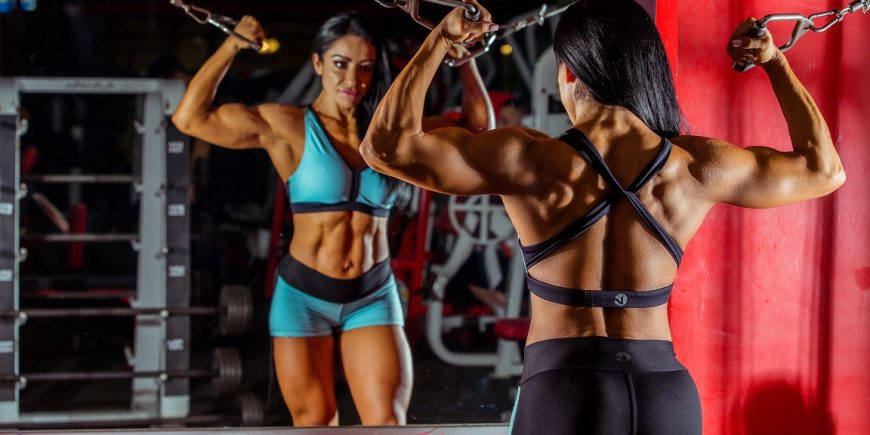Having a matching pair of thick, square pecs are on every man’s wish list. It doesn’t matter if they always rank behind abs and butt in the most admired category, almost every gym goer strives to improve their cleavage.
The pecs refer to the pectoralis major, a large fan shaped muscle. It has two attachment points on the body. One of these is a continuous , expansive attachment from the collar bone, down through the breastbone onto the ribs. The other is on a small groove at the top of the long bone of the upper arm, the humerus. These attachments underline why the most effective chest exercises are those in which the upper arm is drawn towards the midline of the body, albeit from a range of different angles.
In anatomy (A) and body building (BB) the pec is commonly broken down into two major sections, the clavicular (A) or upper (BB) pec (where the muscle fibres attach to the clavicle), and the meatier sternal (A) or lower (BB) pec (where the fibres attach to the sternum). What part of the muscle you hit with an exercise depends largely on the angle at which the upper arm is in comparison to the torso. If you stand up and straighten both arms in front of you so that they are parallel to the floor, you will find that the angle between your upper arm and the torso is approximately 900. This is the same angle at which you would perform a flat Bench Press movement (barbell, dumbbell, machine). This angle utilises both sections reasonably well and forms the mainstay of most chest programs.
By changing the same angle to either greater or lesser than 900 it is possible to switch muscle activation to predominantly upper pr lower pec. Incline movements are well known to induce upper pec stress and when analysed it can be seen that the angle at which the upper arm forms at the torso is more than 900. Conversely an angle less than 900 will target the lower pecs more. Analysis of a decline movement or even a Chest Dip bears this out. The same principle can be applied to the Pec Deck exercise. By brining the seat down and pacing the arms higher on the pads a large angle can be created thus placing more emphasis on the upper pec. By adjusting the seat higher and bringing the arms lower the lower pec can be stimulated.
In your quest for pectoral perfection try this routine that will utilise the three angles of attack to work the entire chest area. Pick 3 chest exercises, one that works at an angle greater than 900, one that forms at 900 and one less than 900, from the list below
| A->900 | B-900 | C-<900 |
| Incline Dumb Bell Press |
Flat Dumb Bell Press |
Decline Dumb Bell Press |
| Bar/Smith/Mach Incline Press |
Bar/Smith/Mach Press |
Bar/Smith/Mach Decline Press |
| Low Pulley Cable Cross |
Pec Deck/Fly | High Pulley Cable Cross |
Perform 3-4 sets of 8-12 reps for each exercise but change the order of exercises every workout in this fashion: ABC, BCA, CAB. Complete 3 of these cycles then pick 3 new exercises for the same angles and repeat.
